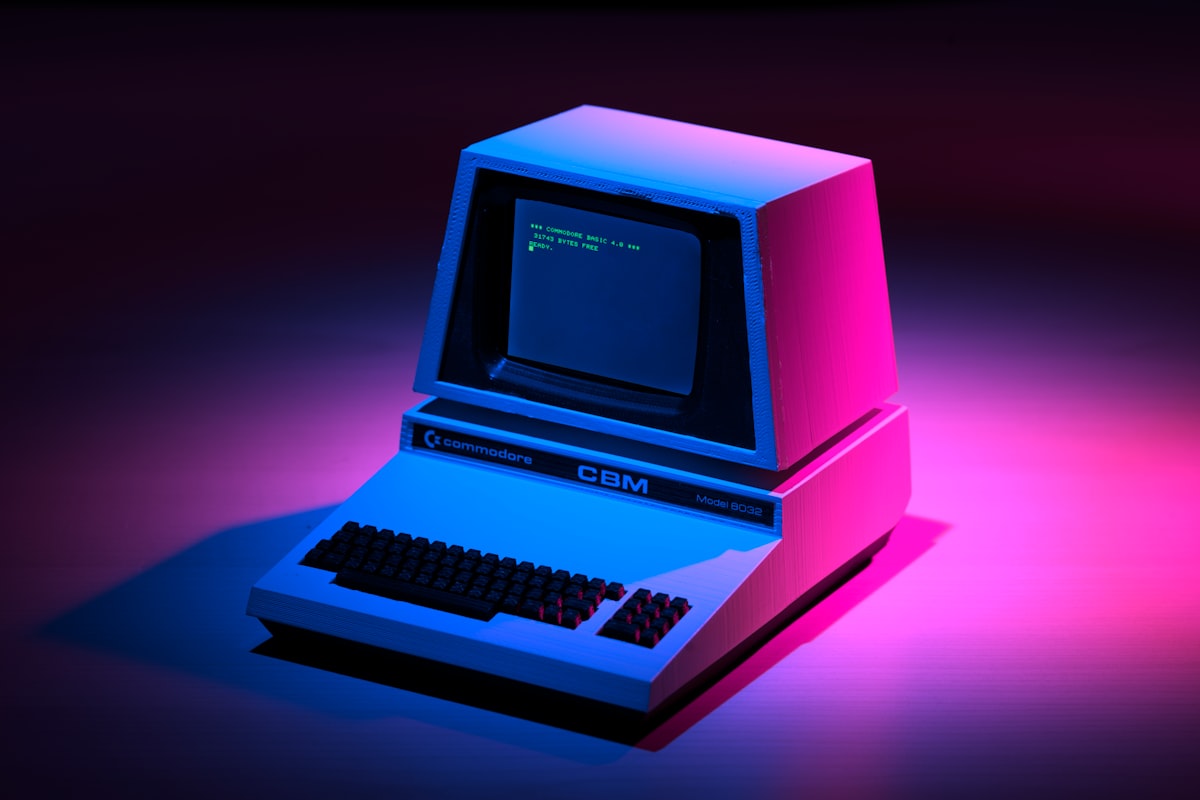The Evolution of Computing: From the Abacus to Quantum Computers
The history of computing is a fascinating chronicle of human endeavor, innovation and the relentless pursuit of enhanced calculation capabilities. This journey has taken humanity from the simplest counting devices to the cusp of a new era in quantum computing,

The history of computing is a fascinating chronicle of human endeavor, innovation and the relentless pursuit of enhanced calculation capabilities. This journey has taken humanity from the simplest counting devices to the cusp of a new era in quantum computing, where the fundamental laws of nature are harnessed to process information in ways previously unimaginable. Let's delve deeper into the milestones that have defined the evolution of computing.
Early Beginnings: The Abacus to the Analytical Engine
The Abacus
The abacus, with origins dating back to ancient Sumeria and subsequently used in civilizations such as China and Greece, is a manual aid for arithmetic calculations. The typical abacus consists of a wooden frame, rods and beads. Each bead's position represents a specific value and by manipulating these beads, users can perform calculations like addition, subtraction, multiplication and division.
The Chinese abacus, or suanpan, typically has two beads on the upper deck and five on the lower for each rod, allowing calculations in base-10.
Mechanical Calculators
The 17th century saw the emergence of mechanical calculators. Blaise Pascal's Pascaline could perform addition and subtraction, while Gottfried Wilhelm Leibniz's stepped reckoner introduced the capacity for multiplication and division. These devices were limited but represented the first steps toward automating computation.
The Pascaline had a series of dials with numbers 0 through 9; rotating one dial one full turn would advance the next dial, thus performing an addition.
The Electromechanical and Electronic Evolution
The Electromechanical Era
In the early 20th century, inventors like Konrad Zuse and Howard Aiken bridged the gap between mechanical and electronic computing. Zuse's Z3 was a programmable computer using telephone switching equipment, while Aiken's Harvard Mark I was a room-sized assembly of mechanical parts and electromagnetic relays.
The Z3 used a binary floating-point number and switch-based memory, making it similar in concept to modern computers.
The ENIAC and the Birth of the Electronic Computer
The ENIAC, developed by J. Presper Eckert and John Mauchly at the University of Pennsylvania, was a behemoth with 18,000 vacuum tubes. It could perform complex calculations at unprecedented speeds for its time, though it was not a stored-program computer.
The ENIAC was used to calculate artillery firing tables for the United States Army during World War II.
The Microprocessor Revolution and the Digital Age
The Invention of Transistors
The transition from vacuum tubes to transistors was a game-changer. The transistor, a much smaller and more reliable switch, enabled computers to become more powerful and compact.
The IBM 7090, a transistorized version of the earlier IBM 709, was used for NASA's Mercury and Gemini space flights, showcasing the reliability of transistor-based computers.
The Rise of Integrated Circuits
The integrated circuit (IC) took the transistor to the next level, allowing multiple electronic components to be integrated onto a single silicon chip. This miniaturization led to the first microprocessor.
The Intel 4004 microprocessor, containing 2,300 transistors, was initially designed for calculators but laid the foundation for the microcomputers to come.
The Microprocessor
The microprocessor led to the personal computer (PC) revolution. These compact, affordable computers brought computing power to the masses.
The MITS Altair 8800, often considered the first personal computer, used the Intel 8080 microprocessor and sparked the PC revolution when it was released in 1975.
The Era of Personal Computing and the Internet
Personal Computers
The 1980s and 1990s saw an explosion of personal computing. Apple's Macintosh introduced the graphical user interface (GUI) and mouse to a wide audience, while IBM-compatible PCs running Microsoft's MS-DOS and later Windows dominated the business market.
The Apple Macintosh, released in 1984, popularized the GUI, making computers more accessible to the general public.
The Internet
The internet, initially a project of the U.S. Department of Defense, became the backbone of global communication and information exchange. The World Wide Web, with its web browsers and hypertext links, made the internet user-friendly.
The launch of Netscape Navigator in 1994 provided a graphical web browser that made surfing the web easier, leading to widespread public adoption of the internet.
The Quantum Computing Frontier
The Basics of Quantum Computing
Quantum computing is based on quantum bits or qubits, which can be in superpositions of states. Quantum entanglement and superposition could allow quantum computers to solve certain problems much faster than classical computers.
The Potential of Quantum Computers
Quantum computing could revolutionize fields by performing complex calculations that are intractable for classical computers. For example, it could transform cryptography, material science and complex optimization problems.
Google's quantum computer, Sycamore, claimed "quantum supremacy" in 2019 by performing a calculation in 200 seconds that would take a supercomputer approximately 10,000 years.
Current State and Challenges
Quantum computing is still in its early stages, with major challenges such as qubit stability and error rates. Researchers and companies are working on quantum error correction and other methods to make quantum computing practical for real-world applications.
IBM's Quantum Experience allows researchers and hobbyists to run experiments on IBM's quantum processors, advancing the collective understanding of practical quantum computing.
Conclusion
The evolution of computing from the abacus to the quantum computer represents one of the most significant technological narratives of human history. Each innovation has not only built upon the achievements of the past but has also expanded the horizons of what is possible. As quantum computing continues to develop, it promises to unlock new potentials in computation, securing its place as the next great milestone in the ever-evolving story of computing.



